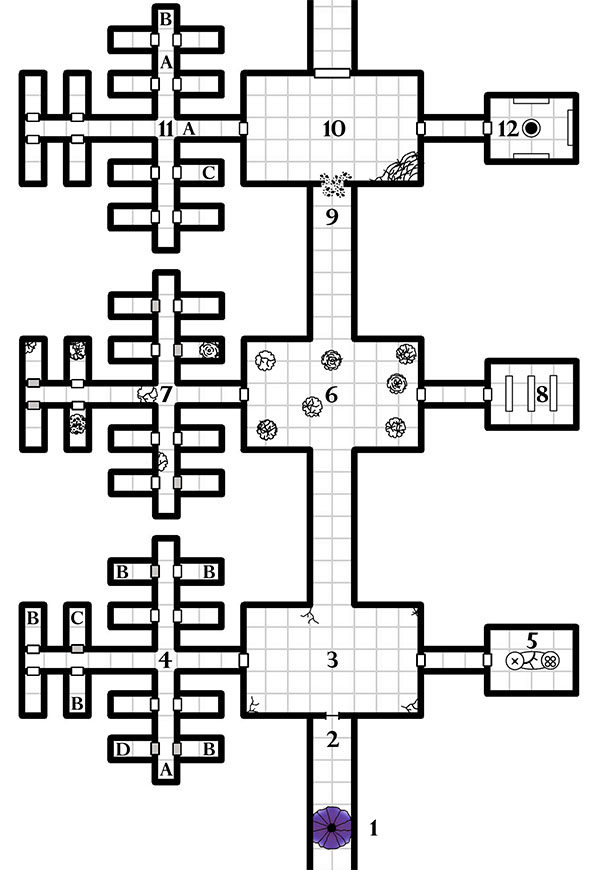IN THE SHADOW OF THE SPIRE
Session 7A: The Aristocrat’s Table
In which preparations are made for a momentous meeting, secrets are kept, and a fateful flame is seen burning in the harbor…
I’ve talked previously in this series about the role of a journal in enhancing a campaign. This week you can see some vestiges of the document’s living history: At this early stage of the campaign, many of the characters were keeping secrets from each other. Although there are many ways of handling this, I’ve generally favored having the players also keep the secrets from each other. A little light paranoia never hurt anybody, and the resulting patchwork of understanding can have all sorts of entertaining fallout.
If a secret is worth keeping, then a secret is worth keeping.
So these early days of the campaign featured a number of sub-channels in our online chat, and later there would be any number of side conferences and the like with me and various player scurrying off to another room.
Preparing and, more importantly, disseminating the journal for In the Shadow of the Spire proved somewhat challenging under these conditions, however. I didn’t want to leave all this secret action unrecorded, so simply leaving it out of the campaign journal entirely wasn’t a viable option. In practice, it meant carefully structuring the campaign journal so that the secrets were clearly separated from the rest of the material and could be removed as a “chunk” without leaving a clear trace behind. (The section near the beginning of this journal entry headed “Tee Slips Away” is an obvious example of this.)
There was one memorable session where this meant creating a different version of the journal for every single player, although in general it meant preparing 2-3 different versions. And, eventually, only Tee was still keeping a part of her life hidden away (necessitating a “secret journal” for her every couple of sessions; or rather, vice versa, a special incomplete version of the journal created for everyone else).
SECRETS AT THE TABLE
There are, of course, many groups who would consider this entire concept of players keeping secrets from each other anathema. I’ve generally found that these groups are virtually always the ones which also prohibit any sort of intra-party strife of any kind, and many of them also abhor the concept of splitting the party.
 In my experience, these sorts of prohibitions (“no secrets”, “no strife”, etc.) are almost always seeking to address a fundamental problem by targeting its symptoms. There are generally two variants of this problem.
In my experience, these sorts of prohibitions (“no secrets”, “no strife”, etc.) are almost always seeking to address a fundamental problem by targeting its symptoms. There are generally two variants of this problem.
First, you have a disruptive, immature player is just trying to ruin other people’s fun. To address this problem you create a network of Thou Shalt Not rules attempting to knock down the player’s disruptive antics. In reality, of course, the disruptive player will always be able to find some new way of disrupting the group. You need to solve the underlying problem of them being an asshat (by either getting them to stop doing that or kicking them out of the group).
Second, and often related to the former (or previous experiences with the former), the group has constructed a whole interlocking network of formal or informal rules preventing:
- PCs leaving the group.
- PCs attacking each other.
- PCs agreeing to kick another PC (not player!) who they no longer wish to associate with out of the group.
- Splitting the party.
And so forth. The exact network of such prohibitions or “understandings” varies, but the net result is that you take a bunch of characters, thrust them into high stakes situations, and then artificially force them to continue co-habitating even after events have set them at irreconcilable loggerheads. Basically, you’ve created an RPG simulation of Sartre’s No Exit.
And then you just keep adding on more forced conventions in an effort to keep the lid on the pressure cooker you’ve created.
And what you also lose in the process is all of the cool gaming experiences that can arise from hidden player knowledge. The entirety of Paranoia, for example, or the superb Ego Hunter scenario for Eclipse Phase are a couple of pre-packaged examples, but the organic examples that rise up spontaneously at the gaming table can be even more exciting.
RUNNING SECRETS
A few best practices for handling player secrets.
First, take the initiative from the players. (Or, more accurately, from the actions of their characters.) Although it can be useful to make it explicitly clear that the option is available, since some players have been conditioned by previous tables to think that it’s not an option, generally speaking the desire to keep a secret needs to originate from the character keeping the secret; it’s not something that can be imposed from the outside.
Second, you’ll generally want to follow the same conventions as splitting the party: Make sure to balance spotlight time and switch between the groups so that neither is left loitering. (Although giving part of the group a straight-up break while you resolve what the other part of the group is doing — and then vice versa — can be an effective technique.)
Third, don’t mistake “the other characters don’t know this yet” as being the same thing as “secret”. Nine times out of ten, when the party splits up, there’s no need to keep their activities secret from each other: If they’re not trying to keep secrets from each other, they will most likely be fully briefing each other next time they get together (so you might as well let them know as it’s happening; which will save you time on the other end and also keep the table engaged as an audience to what’s happening). There are exceptions to this — when keeping each group blind to what’s happening to the other group will enhance the enjoyment of one or both groups — but they’re relatively rare.













